What we’re deploying
We’re going to deploy a basic Node.js application written in Express.js - but that doesn’t mean you’re restricted to the Expressjs web framework. You’re free to use all JS frameworks. This app has two endpoints -/ and a basic healthcheck endpoint at /healthz, to demonstrate how you can push out a public-facing app on Porter Cloud with a public-facing domain and TLS. The idea here is to show you best practices for how a sample application can be quickly deployed on Porter Cloud, allowing you to then use the same flow as an entry point for deploying your own Node.js project.
You can find the repository for this sample application here: https://github.com/porter-dev/nodejs-getting-started. Feel free to fork or clone it, or bring your own.
Deployment Process
Deploying Node.js applications from a Github repository on Porter involves - broadly - the following steps:- Creating a new app on Porter where you specify the repository, the branch, any build settings, as well as what you’d like to run.
- Building your app and deploying it (this is handled by Porter’s automation so you don’t have to worry about Continuous Integration and Continuous Deployment).
Creating an app and connecting your Github repository
On the Porter Cloud dashboard, selectCreate a new application, which opens the following screen:
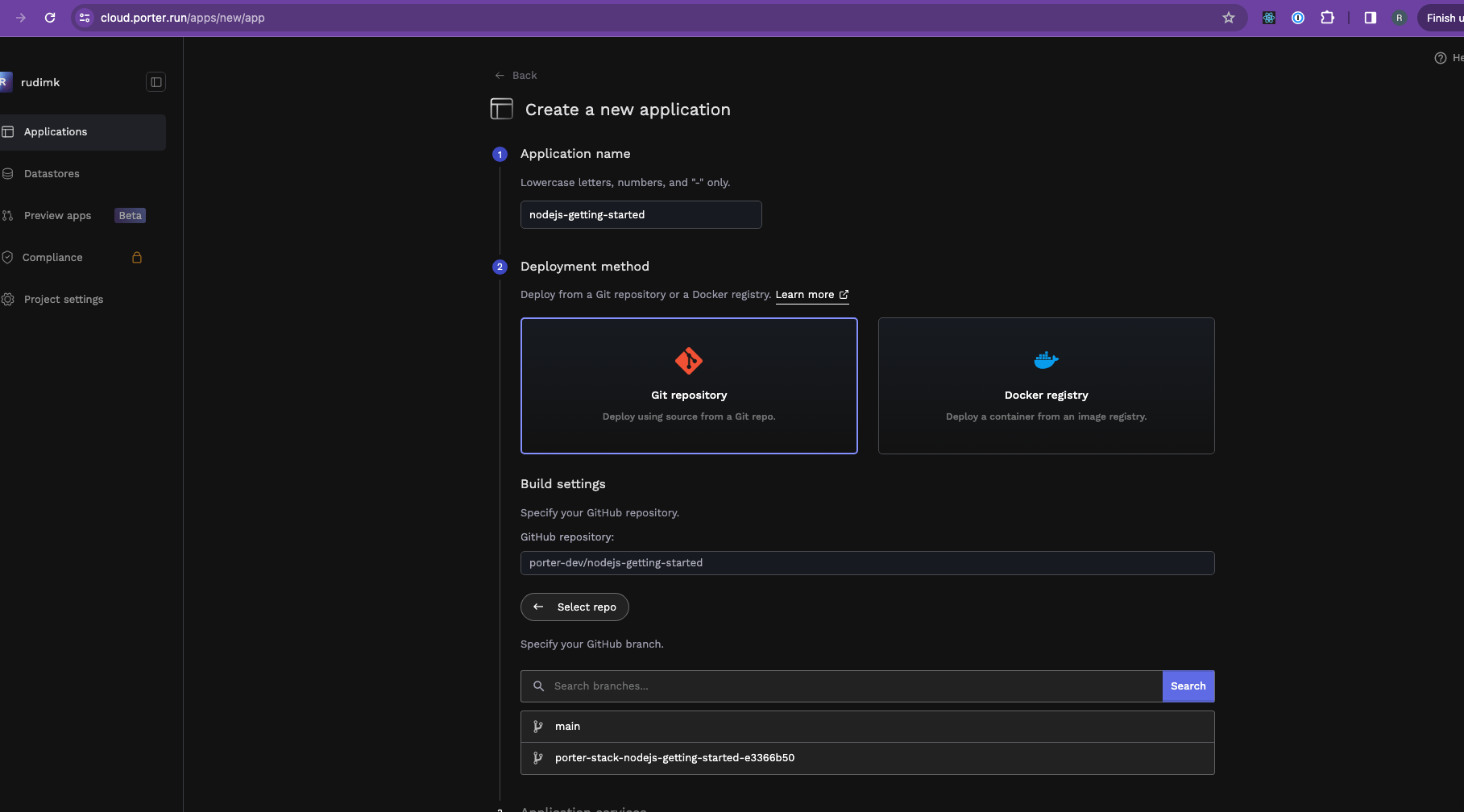
If you signed up for Porter Cloud using an email address instead of a Github account, you can easily connect your Github account to Porter by clicking on the profile icon on the top right corner of the dashboard, selecting
Account settings and adding your Github account.Configuring build settings
Porter automatically detects what language your web application is written in, and selects an appopriate buildpack used to automatically package your app for eventual deployment. Once you’ve selected the branch you wish to use, Porter will display the following screen:
heroku/builder:22 buildpack for our app.
Configuration of services
At this point, it’s a good idea to take a quick look at applications and services. An application on Porter is a group of services, where each service shares the same build and the same environment variables. If your app consists of a single repository with separate modules for an API, a frontend, and a background worker, then you’d deploy a single application on Porter with three separate services. Porter supports three kinds of services:web, worker and job services.
Let’s add a single web service for our app:
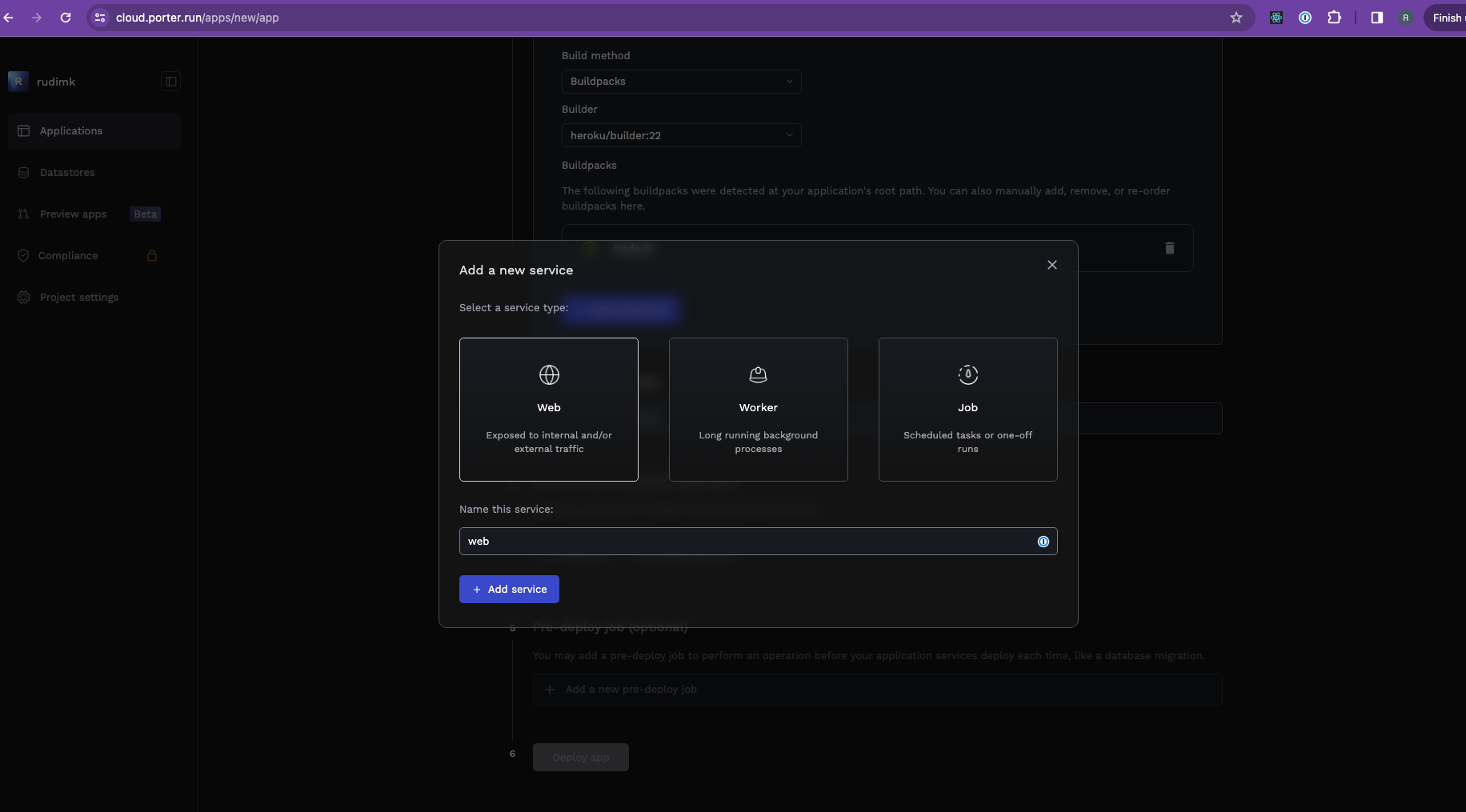
Configure your service
Now that we’ve defined a single web service, it’s time to tell Porter how this service runs. That means specifying what start command to run for this service, what kind of CPU/RAM levels to allocate, as well as how this will be accessed publicly.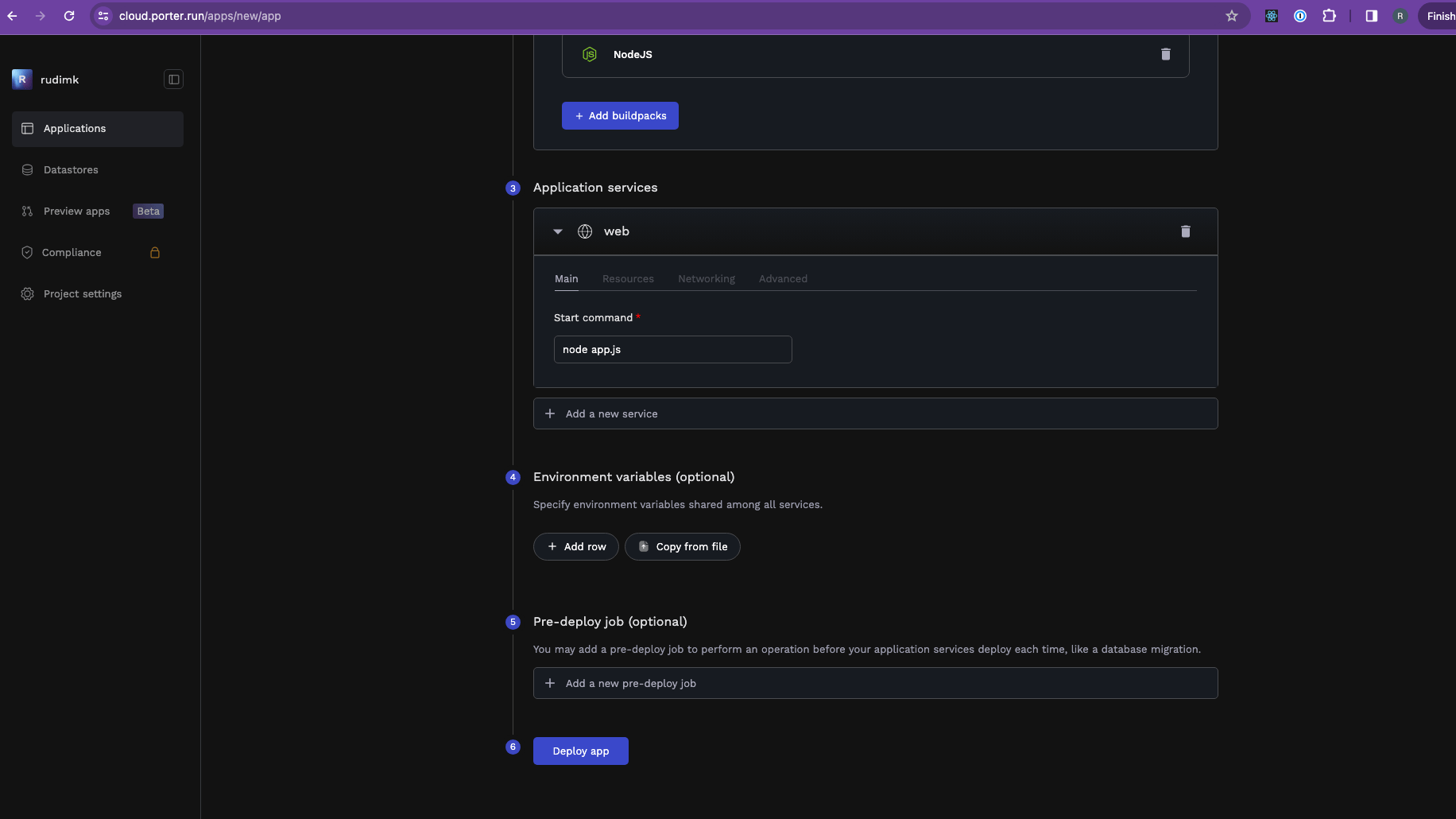
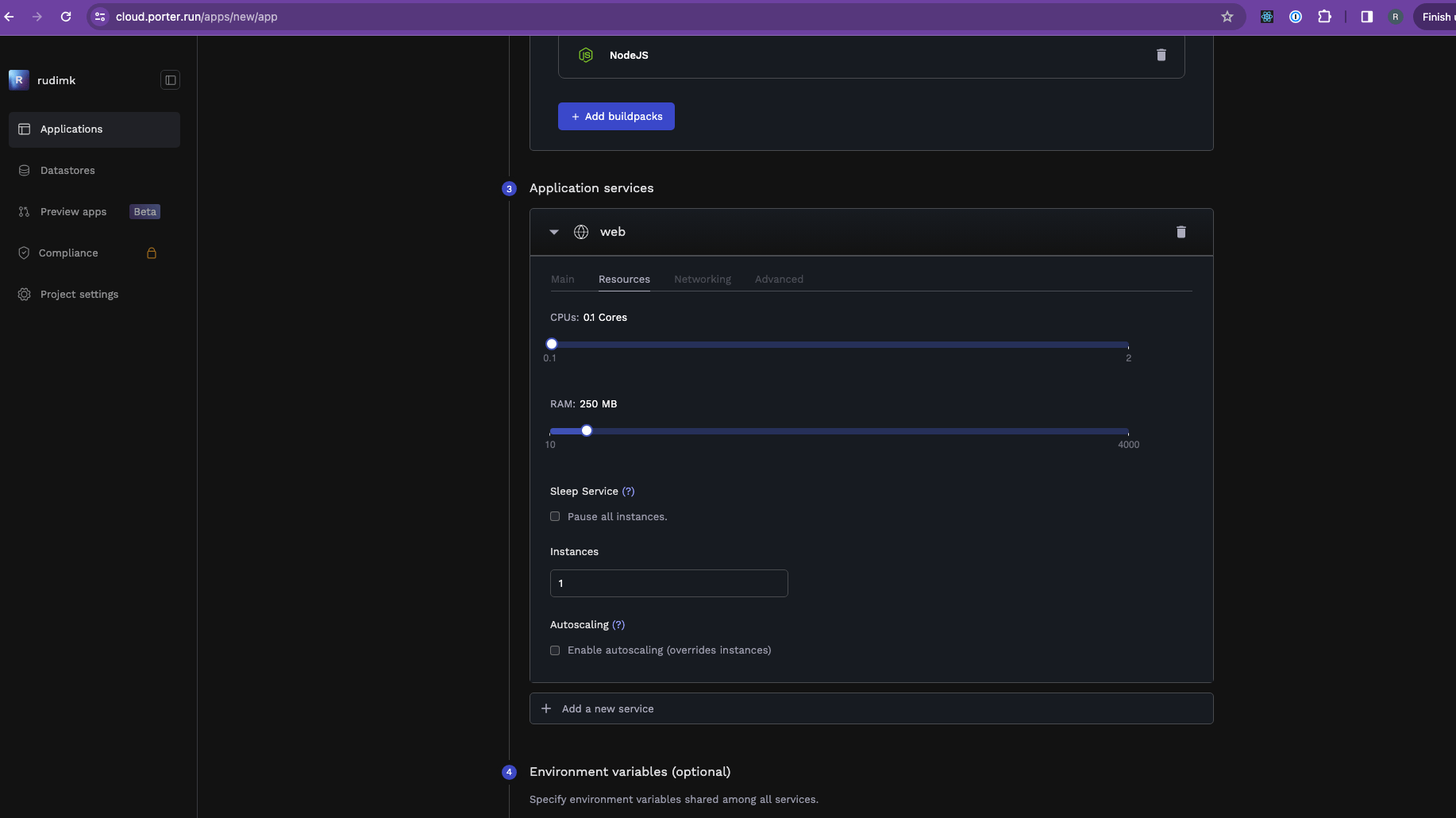
Resources tab allows you to define how much CPU and RAM your app’s allowed to access. Porter Cloud imposes a limit on the resources that can be used by a single app. If your app needs more scalability and performance, it might make sense to look at Porter Standard instead, the Platform as a Service (PaaS) that allows you to bring your own infrastructure and have more flexibility regarding resource limits. You can also use cloud provider credits to cover the cost of each AWS EC2 instance and Azure VM when using Porter Standard, and you may need to be hosting on your own cloud to meet any security framework standards like SOC 2.
You can also define the number of replicas you’d like to run for this app, as well as any autoscaling rules - these allow you to instruct Porter to add more replicas if resource utilization crosses a certain threshold.
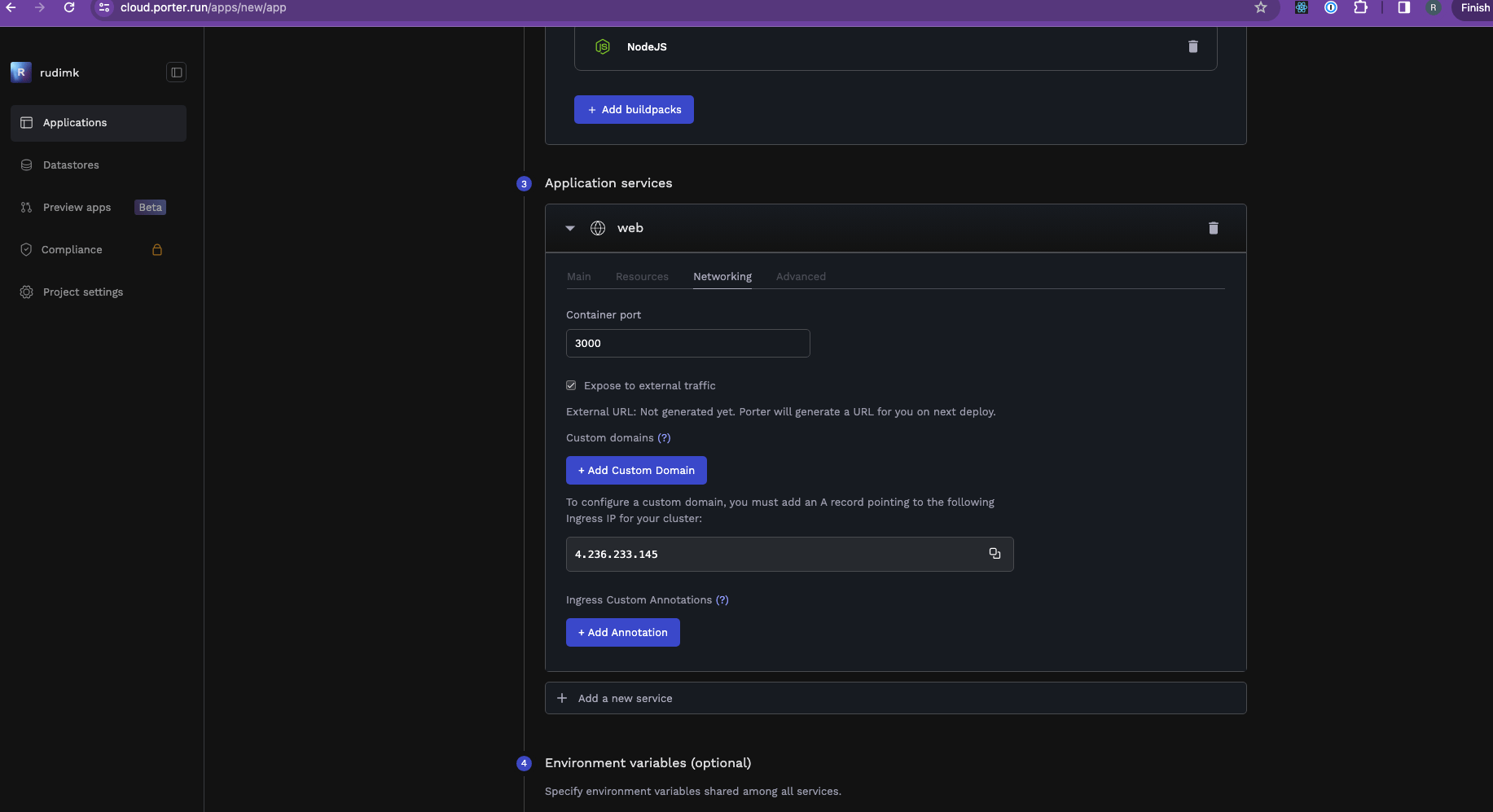
If your app listens on
localhost or 127.0.0.1, Porter won’t be able to forward incoming connections and requests to your app. To that end, please ensure your app is configured to listen on 0.0.0.0 instead.App Deployment: review and merge Porter’s PR
HittingDeploy will show you the contents of a Github Action workflow that Porter would use to build and deploy your app:
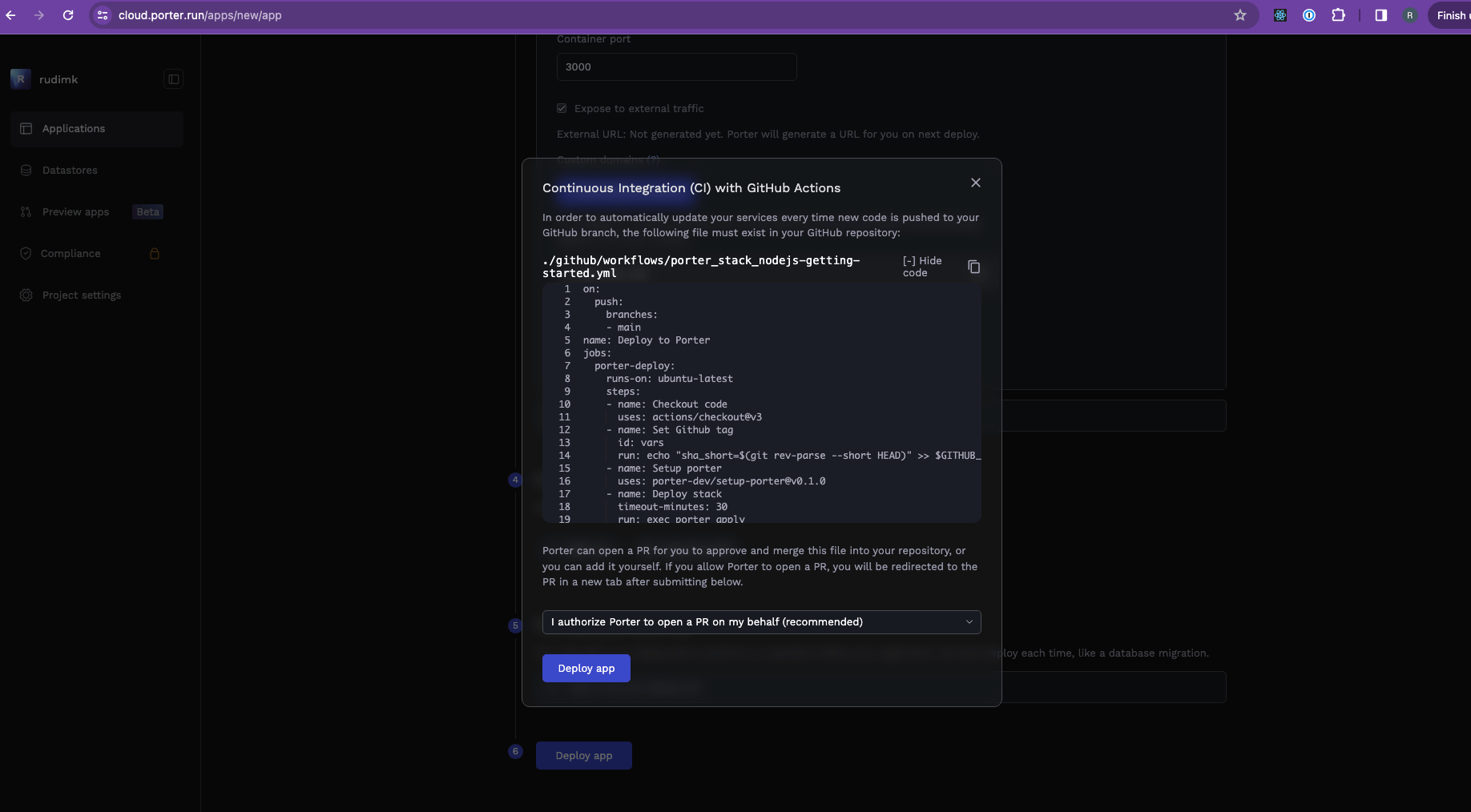
Deploy app will allow Porter to open a PR in your repo adding this workflow file:
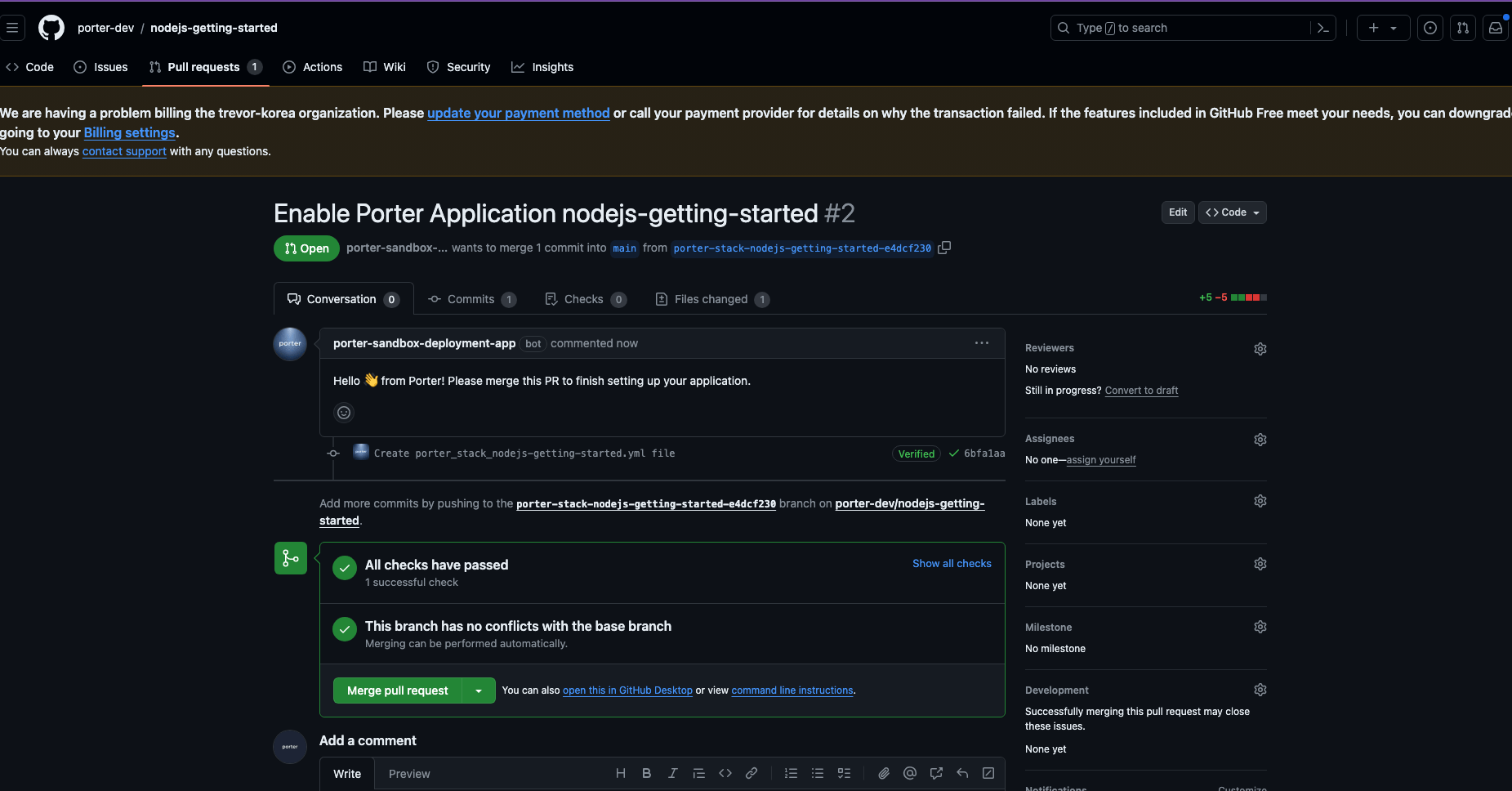

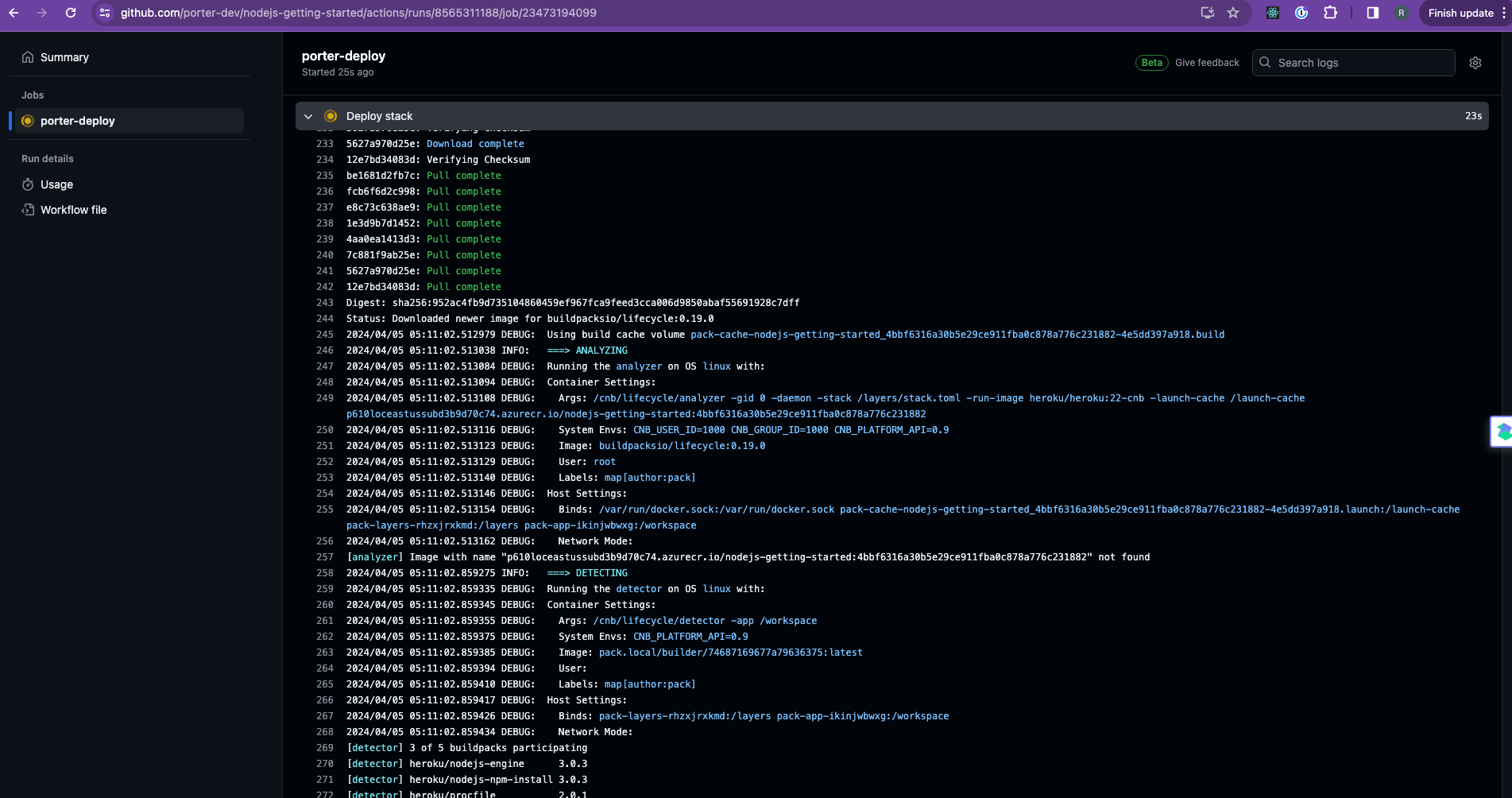
Activity tab on the Porter dashboard to see a timeline of your build+deployment going through. Once the build succeeds, you’ll also be able to see the deployment in action:

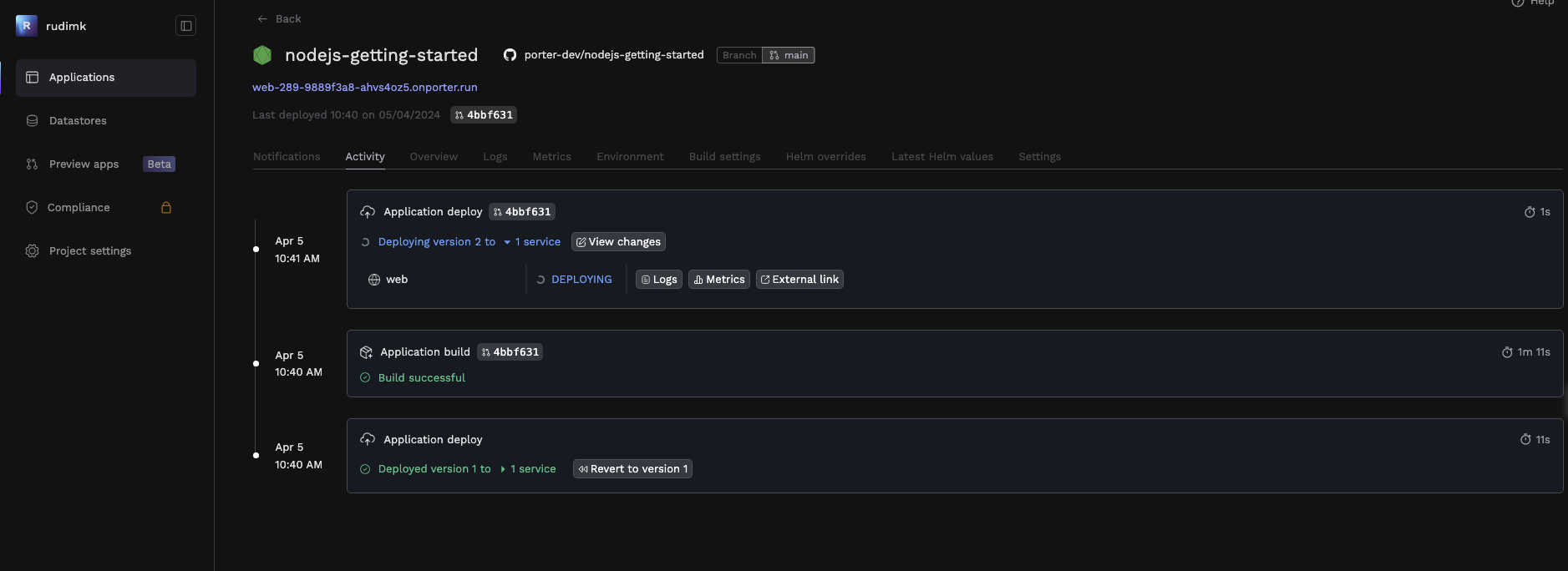
Accessing your app
Your Nodejs app’s now live on Porter Cloud. The Porter-generated unique URL / domain name is now visible on the dashboard, under your app’s name. Let’s test it:

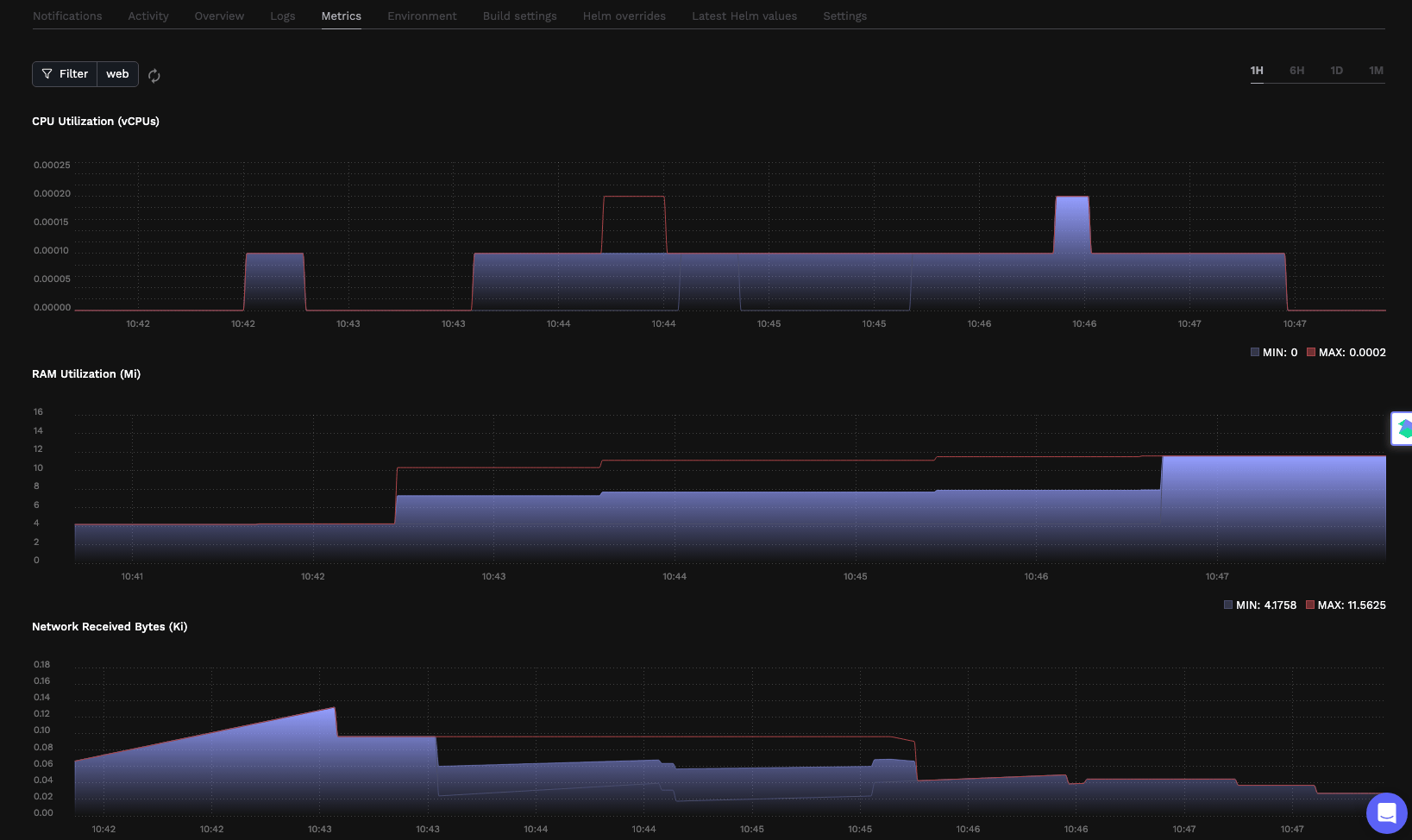
Exploring Further
We’ve seen how you can go about deploying your Nodejs app on Porter. Here are a few pointers to help you dive further into configuring/tuning your app:- Adding your own domain.
- Adding environment variables and groups (environment groups are only available when hosting on Porter Standard).
- Scaling your app.
- Ensuring your app’s never offline (we’ll renew and manage the SSL certificate for you).

